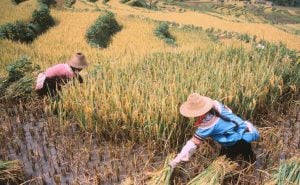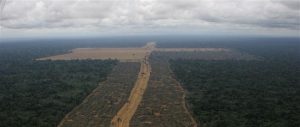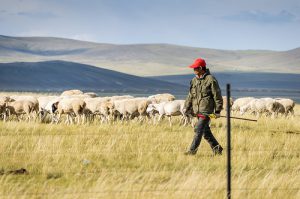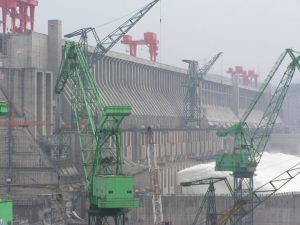The scale of growth in China’s meat production over the past three decades is staggering. Today, one-third of the world’s meat is produced in the country and half of all pigs live there. While per capita consumption may still be below the US and Europe – for now at least – it still managed to jump from 4kg to 61kg between 1961 and 2010.
Unlike the US though, China must produce this meat with a comparative scarcity of resources. For example its water availability per capita is around 2,000 cubic metres (cm), according to the World Bank, compared to 9,000cm, 22,000cm and 82,000cm respectively in the US, Australia and Canada – all countries with major agricultural surpluses.
Although China’s leadership has been wary, until recently, of admitting it, the country’s long-standing self-sufficiency policy in key food crops has become unsustainable. Huge increases in grain and meat production have not been enough to prevent a growing food trade deficit, which stood at US$31 billion in 2012, according to the OECD.
A shift towards greater imports of commodities such as wheat and soyabeans may relieve pressure on China’s land and water resources, but not, as officials have been indicating, if it is accompanied by a hike in the domestic production of meat and dairy.
China has already paid a high price for its rapid increases in meat production, with livestock now the main source of both soil and water pollution, according to data released by China’s Ministry of Environmental Protection in January. China can ill-afford to lose more of its scarce resources, with Wang Shiyuan, a government official, admitting in December 2013 that around three million hectares – or an area roughly the size of Belgium – was now too polluted to grow crops.
While environmental officials are pointing the finger of blame for livestock-related pollution at large-scale farms, these same operations are expected to take over the vast majority of meat production within China over the next two decades. As the takeover of Smithfield Foods, the world’s biggest pork producer by Shuanghui International (recently renamed WH Group) last year showed, Chinese companies are keen to tap into US expertise in intensive meat production. “There are those that say China is not cut out for the highly polluting US meat industry model which it seems to be embracing,” says Shefali Sharma, from the Institute for Agriculture and Trade Policy (IATP) and co-author of a report published this month on the intensification of China’s livestock sector.
The report warns of the emergence of new problems for China from replicating the US model of meat production, including a rise in antibiotic resistance (nearly 50% of antibiotics produced are already used by the livestock sector in China) and dietary-related diseases.
The adoption of western diets high in meat and processed dairy has been linked to an emerging epidemic of diabetes in China, with 50% of the population showing a prevalence of pre-diabetes and 11% already diabetic (up from 1% in 1980).
"Chinese policymakers see the US intensive pork production model as the solution to China’s food safety problems. Yet it is precisely this system of factory farming that has led to drastic environmental, public health and animal welfare problems in the US," says the IATP report.
Ma Jun, director of the Institute of Environmental and Public Affairs, a Beijing-based green NGO, said China was wrong to try to follow a western model of excessive meat consumption.
"In some cities, excessive consumption does exist amongst some people with the income higher than average. This can affect the environment and is not beneficial for human health. China should not model itself on western countries and promote this kind of consumption."
However, the IATP report goes on to warn of a new and powerful agri-business lobby in China, led by companies such as WH Group, blocking any restraints on the livestock sector.
Sharma said there was a "symbiotic relationship" between the meat industry and officials, which was likely to be giving so-called ‘Dragon Head Enterprises’, tasked with promoting new forms of intensive agriculture, a strong influence in policy making.
"The government supports the formation and strengthening of dragon heads and the dragon heads support the policy direction China is heading, which is further consolidation and control of agribusiness over the food system," she said.
Jeff Zhou, the China representative of Compassion in World Farming, agreed. "I think at a governmental level – the think tanks and officials – are aware of the environmental costs, but still the priority is to feed the people. They [agribusinesses] have been leading the development of the industry for many years and are considered as successful models by other followers, as well as the government."




